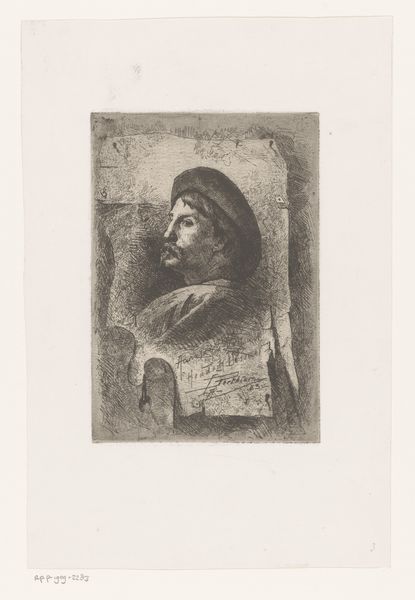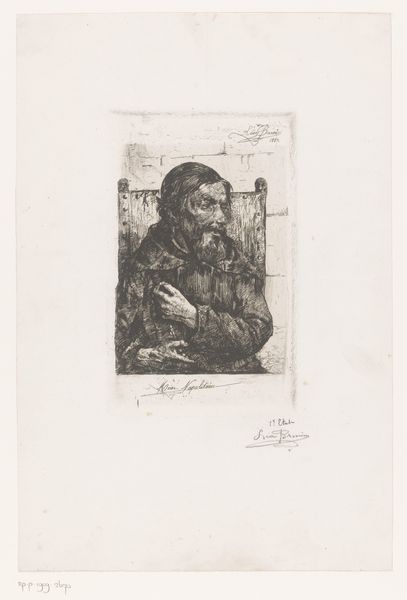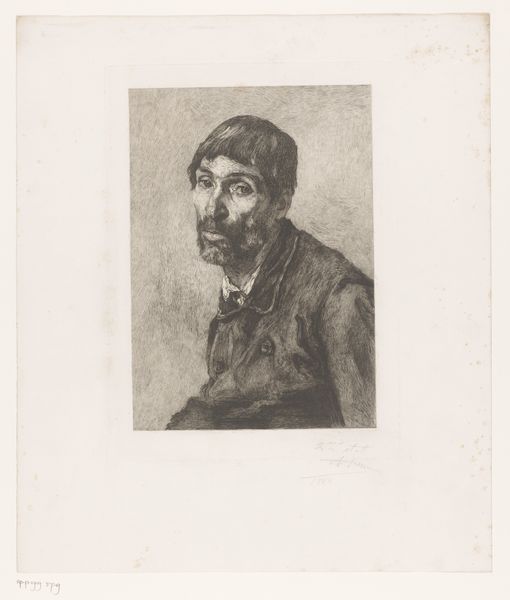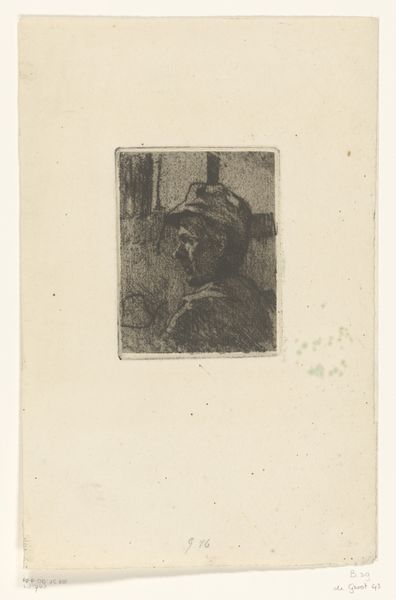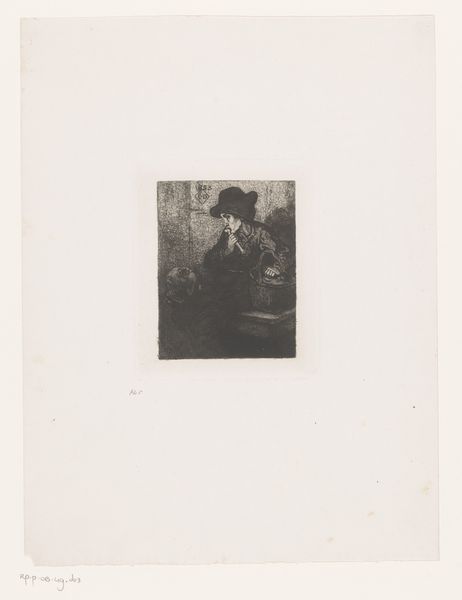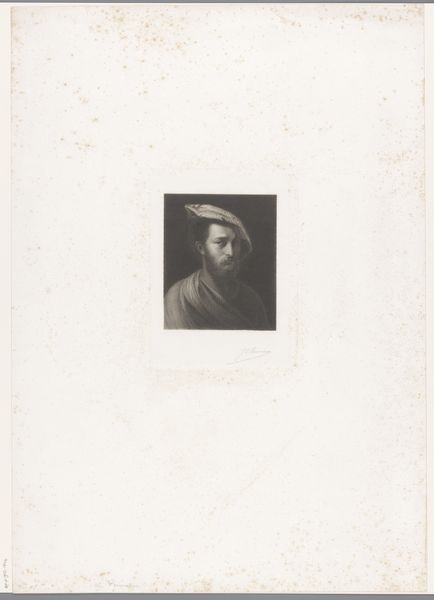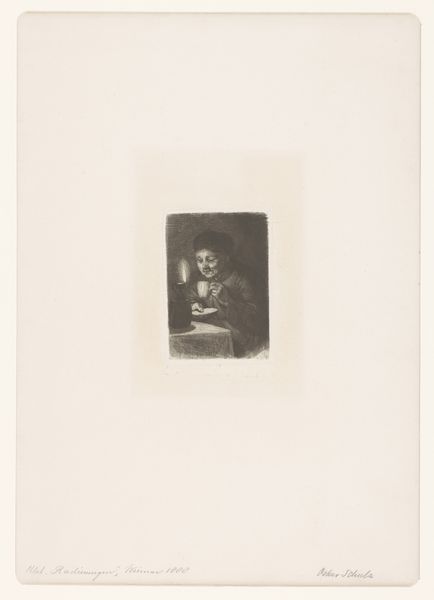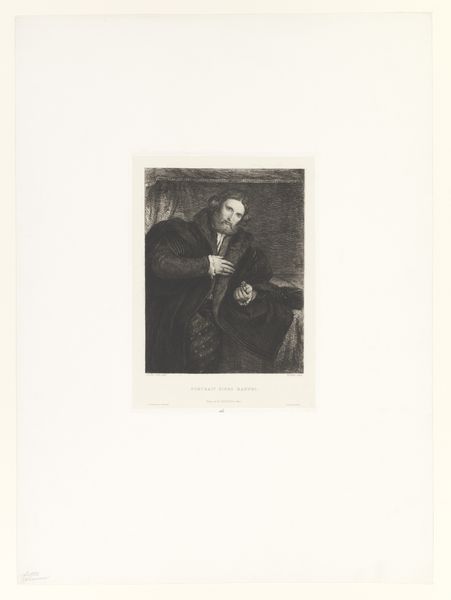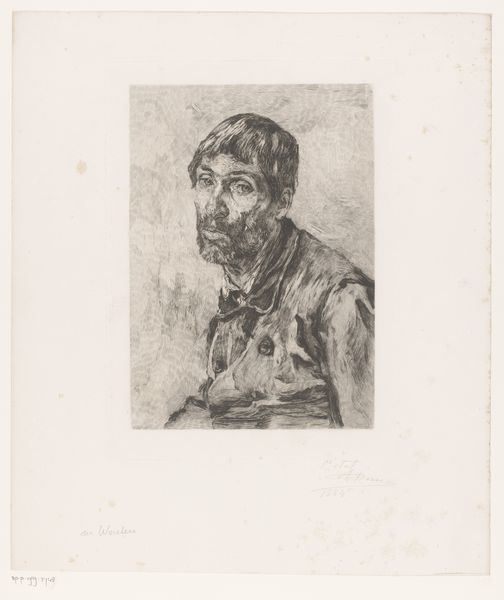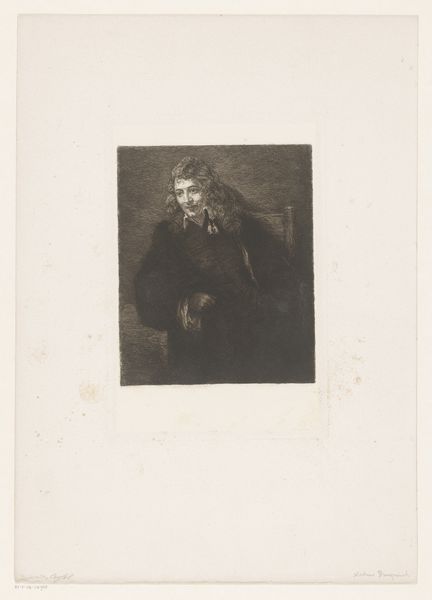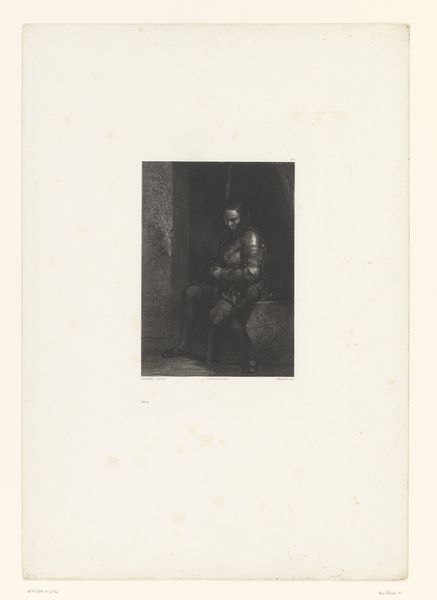
print, etching
#
portrait
# print
#
etching
#
genre-painting
#
academic-art
#
realism
#
monochrome
Dimensions: height 202 mm, width 125 mm
Copyright: Rijks Museum: Open Domain
Léon Brunin made this etching of a Neapolitan monk sometime in the late nineteenth or early twentieth century. He created it at a time when European artists were fascinated with Italian culture. But what did Italy represent for artists outside of Italy? Images of monks were very popular at the time, a kind of shorthand for spirituality and devotion, but they can also imply the social issues relating to religious institutions. Consider the institutional role of the church in Neapolitan society at the time. In the early 20th century, Naples was known for both its vibrant culture and its deep social inequalities. Brunin's choice to depict a monk could be a comment on the church's role in addressing these issues, or perhaps a reflection on the personal piety of the individual within that system. To fully understand the artwork, further research would be needed, but, by paying close attention to the socio-political context in which art is made, we can gain a deeper understanding of its meaning and significance.
Comments
No comments
Be the first to comment and join the conversation on the ultimate creative platform.
